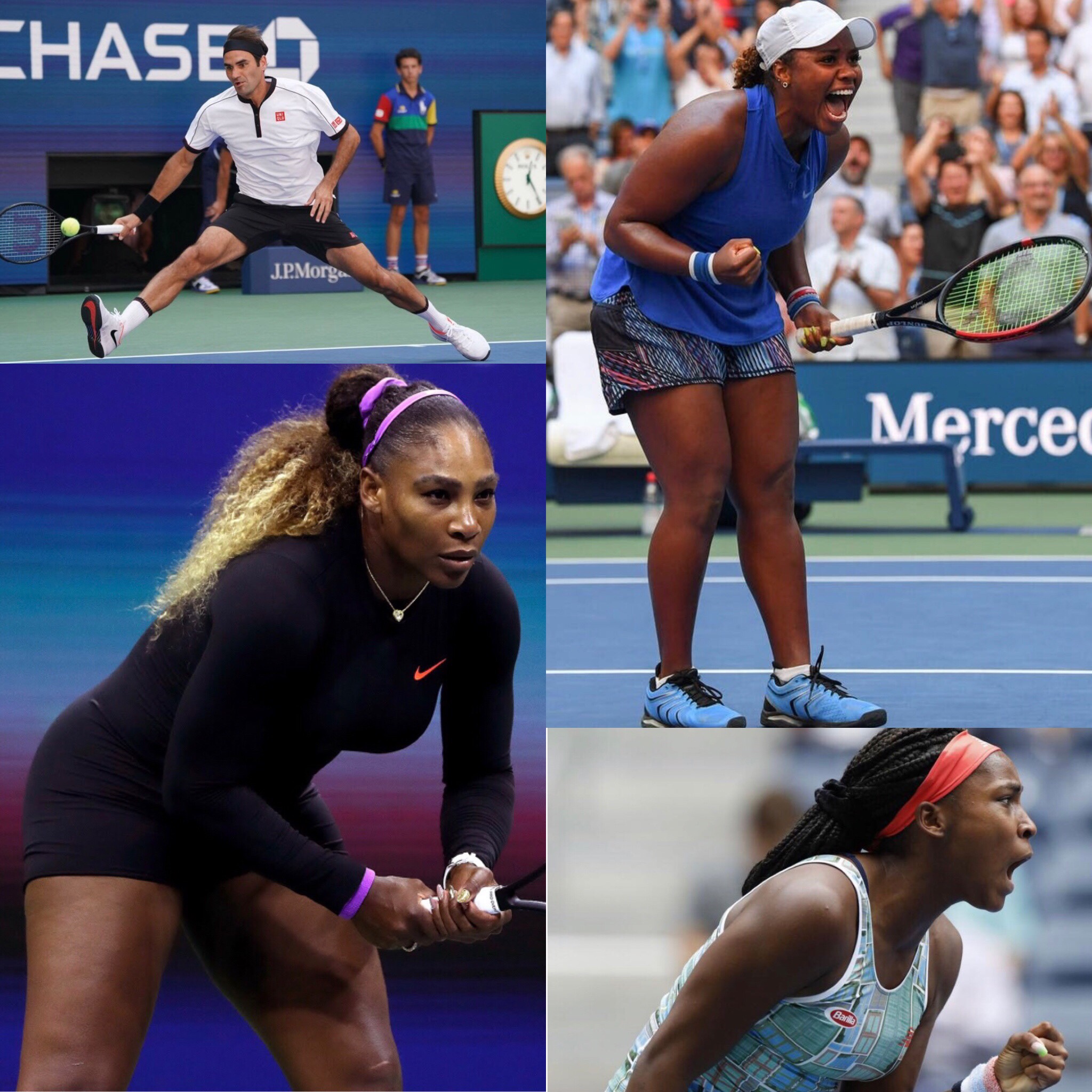
Recently I was watching the US Open tennis tournament. As a tennis player and big fan I am amazed by the athleticism and abilities of both male and female players. There are players of many different nationalities, races, and ages, ranging from the very young American up and comers, 15 year old Coco Gauff and 23 year old Taylor Townsend, to the accomplished Swiss veteran, 38 year old, Roger Federer and super successful 37 year old Serena Williams.
As I watched I also started to notice all the diversity in regards to body types and sizes, especially among the women. In our thin obsessed society there is an overarching idea that there is only one acceptable body type that is deemed to be acceptable and attractive and I believe this is prevalent in the way we view athletes as well. What I noticed is that there is not just one body type when it comes to these top level players and all are in amazing physical condition and able to play tennis for hours. We tend to make judgements about people's lifestyle and health based on the size of their body and I think these judgements are faulty.
In watching these very strong, athletic women of all different shapes and sizes play I started to think that they are sort of an interesting representation or mirror of all the different body types of women off the court. Next time you are in a crowded place or with a group of people take a minute and just look around and notice the differences. Not with judgement and through the lens of the thin ideal but with curiosity. We are all built differently and the idea that there is one and only one acceptable body type or size is really pretty ridiculous.
I have been reading and learning more and more recently about Health at Every Size, weight inclusivity, and body acceptance as a new paradigm. If you haven't heard of Health at Every Size or HAES it is a movement that supports and promotes the idea that all bodies, no matter their size, are good, acceptable, and even beautiful. This idea is counter cultural to the currently accepted way of thinking. Our current flawed and harmful paradigm is one that is diet centered and weight-focused and often breeds self loathing and a feeling of failure for many that don't fit in to the thin ideal.
HAES is about encouraging people to not focus on weight and the number on a scale as the one and only indicator or outcome for health, but instead approaching health with a broader view and one of kindness and compassion and inclusivity for all. The first of five of the main principles of HAES is Weight Inclusivity: Accept and respect the inherent diversity of body shapes and sizes and reject the idealizing or pathologizing of specific weights.
This idea of weight inclusivity and the HAES approach has been shown to have many benefits to both our physical and mental well-being, as opposed to the ineffective and often detrimental effects of the current weight normative approach – focusing on weight and weight loss as the main indicators of health.
As stated in the article Weight Science: Evaluating the Evidence for a Paradigm Shift published in the Nutrition Journal, Randomized controlled clinical trials indicate that a HAES approach is associated with statistically and clinically relevant improvements in physiological measures (e.g., blood pressure, blood lipids), health behaviors (e.g., eating and activity habits, dietary quality), and psychosocial outcomes (such as self-esteem and body image), and that HAES achieves these health outcomes more successfully than weight loss treatment and without the contraindications associated with a weight focus. Basically what this states is that there are not only physical benefits to the Health at Every Size model measured by things like blood pressure and blood lipids, but also psychological and quality of life benefits too.
I am hopeful that this idea of inclusivity and Health at Every Size will continue to grow and permeate our society and create an acceptance of diversity that allows people to be well and healthy no matter their shape or size. The more I've read and learned the more I've started to hear and notice my own biases and those I am surrounded by. Noticing and becoming aware is the first step in making change.
You can read more about HAES and it's principles at sizediversityandhealth.org.

0 Comments